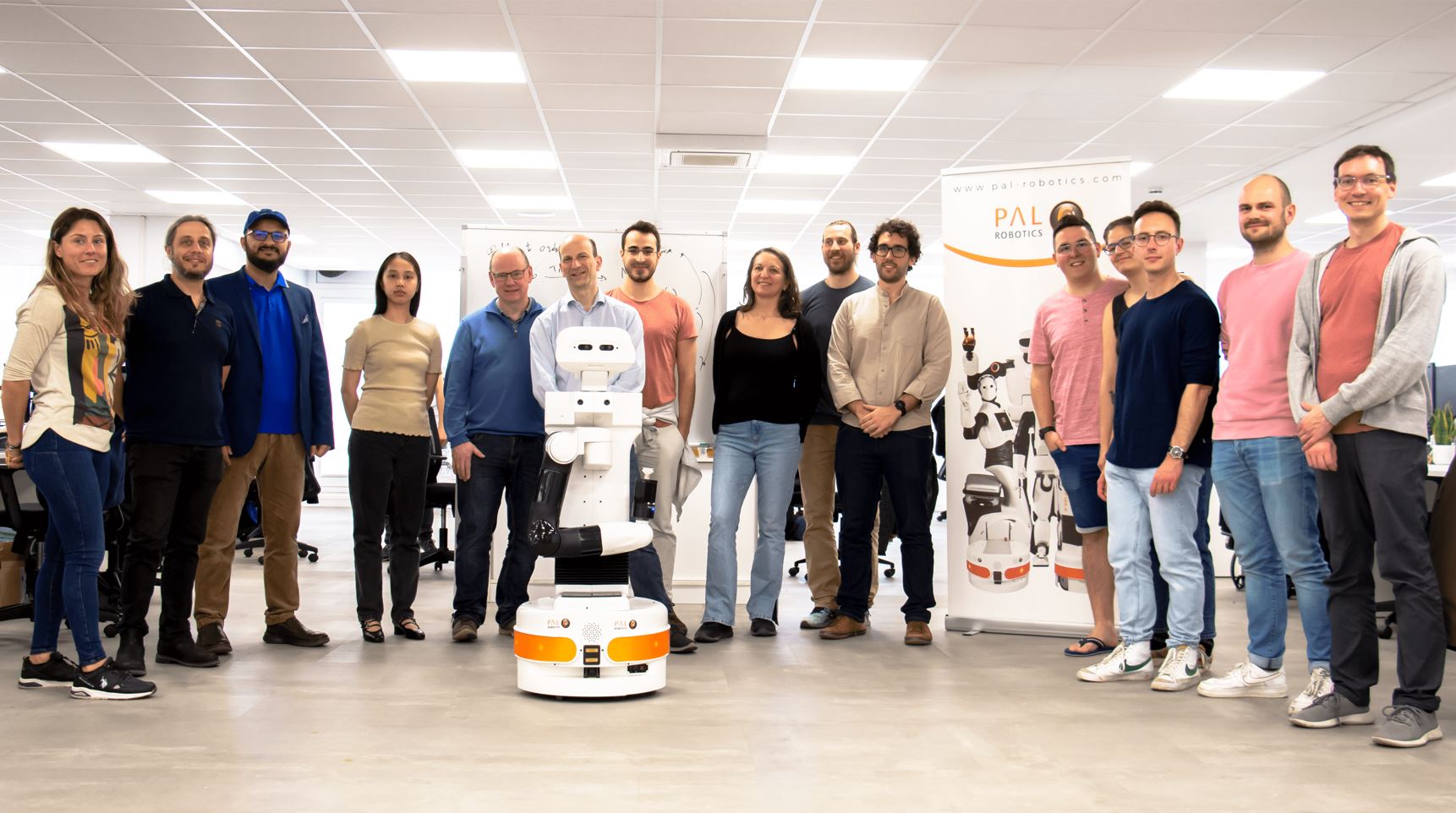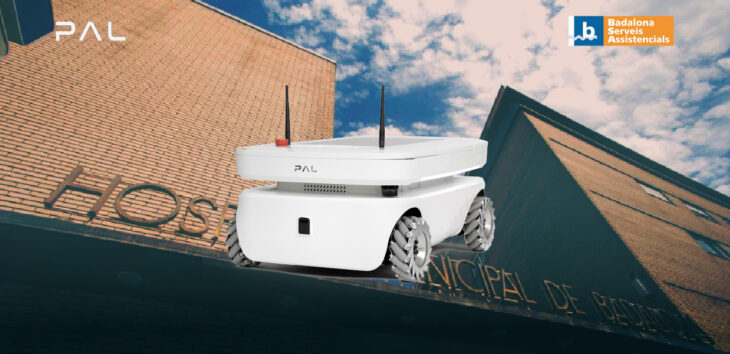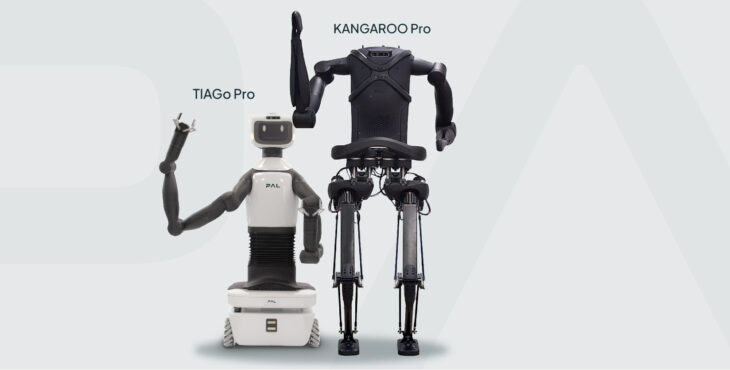Project NeuTouch: the conclusion
Within the project NeuTouch, Luca Lach is working on research on the importance of tactile sensing (touch sensing) for object placing in robotics and has recently published a research paper on bio-inspired grasping controllers. Luca is one of the PhD researchers within the NeuTouch project working on improving artificial tactile systems, including robotics, that give the sensation of real touch. Here we took the chance to ask Luca more about his research and the future legacy of project NeuTouch, which will finish in September 2023.
In project NeuTouch ten young researchers are part of an international network of universities and research centres, that are experts in: neuroscience, modelling and computational neuroscience, neuromorphic engineering, robotics, and prosthetics. The network is completed by companies where researchers are deploying, validating, and testing their knowledge in real settings. NeuTouch aims to develop a new type of technology for building robots that can help humans with daily tasks and give the user the sensation of real touch. The project and partners from NeuTouch recently took part in the last summer school of the project, where they talked about the next steps of the project and concluding their research. The summer school in Barcelona also included a visit to PAL Robotics.

Controller algorithms: that mimic human movements and phases of grasping
The research paper Bio-Inspired Grasping Controller for Sensorized 2-DoF Grippers presents a grasping controller, which combines free-space position control and in-contact force-control for reliable grasping. The controller was tested in two experiments on PAL Robotics’ TIAGo mobile manipulator robot and its parallel-jaw gripper, demonstrating the effectiveness of the approach for robust grasping and minimising object displacement.
As a background to this research, Luca Lach told us, “Platforms such as TIAGo don’t currently have the sense of touch in their grippers or fingers, and therefore don’t know if they have really grasped an object. In order to grasp an object, currently this type of robotic platform looks at the table or surface, estimates where the object is, and uses its camera to see if it has grasped the object. However, by adding a sense of touch (tactile sensors) you can accurately measure success – this is the motivation for adding tactile sensors to the robotic grippers.”
Luca went on to explain further, “Humans grasp objects in phase transitions, for example, one of the phases would be putting fingers on an object and grasping it. The controller algorithm used here mimics human movements in the same way and is motivated by the human phases of grasping, based on the mathematical concept of force-closure. For this research, we evaluated it on the TIAGo robot and presented it in the paper.”
Manipulation: handling delicate objects safely and with more care
The Next step in the research, Luca told us, was to coordinate the closing movement of the grippers to grasp the object firmly without slipping and without damage. He added, “In this research, we proposed a force control algorithm that grasps objects at a certain force without damaging them.”
Luca added, “This approach can be used to improve manipulation performance and safety of manipulation – so that we don’t crush objects, as well as reliability and success rates. Before we wouldn’t have known if we had grasped an object, but now we can measure it. If we in fact find that we haven’t grasped something we can then re-plan.”
“In addition, we can handle objects with more care as we improve the grasp force – examples here would be glass objects or raw eggs that are fragile. Here we are improving both the safety and reliability of the robot manipulation of objects.”
The authors of this research paper were: Luca Lach (PAL Robotics), Séverin Lemaignan (PAL Robotics), Francesco Ferro (PAL Robotics), Helge Ritter (Bielefeld University), and Robert Haschke (Bielefeld University).
Placing by touching: the importance of tactile sensing for accurate object placing
Luca told us he has also been working on research together with Niklas Funk (TU Darmstadt), Robert Haschke (Bielefeld University), Séverin Lemaignan (PAL Robotics), Helge Ritter (Bielefeld University), Jan Peters (TU Darmstadt) and Georgia Chalvatzaki (TU Darmstadt) on the importance of tactile sensing for precise object placing.
Luca told us, “This work concentrates on challenges in relation to object placing and focusses on improving the last phase of object manipulation. An example of a task would be to place an object on the kitchen counter, here for example the robot might place the object such as a mug the wrong way round. Therefore in our calculations, we try to estimate the misalignment of the object in order to plan a motion with the robotic arm that will minimise the misalignment or correct the misalgment. We call this corrective gripper/ arm movement. After this is corrected it’s possible to safely place the object on the table.”
He continued, “We use neural networks for this estimation and the tactile sensors we are using are tactile sensor arrays – a representation in 2D of forces that you feel. Our experiments show that our method is performing well.”
In terms of how this work is important to robotic manipulation, Luca told us, “The outlook of this is that we want to use reinforcement learning to learn control policies that do this misalignment correction while being in contact with the table. In future work, we want to have more complex control policies where the tactile sensors can correct the misalignment while the object is already in contact with the table.”
The vision of project NeuTouch: touch that’s human-inspired
Luca went on to explain how his research connects to the vision of NeuTouch – telling us, “The project looks at how we perceive touch, how we process touch, and how we generate behaviour based on touch. In robotics, we often minick certain human processes and that means usually at each of the three stages of touch. There are researchers looking at these from a human side. We then try to incorporate these into certain domains in robotics – for example in grasping and object placing.”
Luca continued, “There is a view that touch should be human-inspired – even though the technical implementation still differs significantly from what humans do. For progress to keep advancing in this field, we need biologists to continue their research to be able to translate this to the robotics field. The NeuTouch project vision is to mimic human tactile perception and processing including nerve activities and tactile sensors in the fingers etc.”
Thank you to Luca Lach for taking the time to talk with us about this research. Luca’s research and the NeuTouch project include the TIAGo robot – one of the most popular research platforms for EU projects and research institutions across Europe and beyond. To learn more about PAL Robotics and TIAGo, visit our website.
Read more about NeuTouch in our previous post about Project NeuTouch and the development of tactile sensation. Don’t hesitate to get in touch for possible collaborations. As you may already know, at PAL Robotics we work on many cutting-edge projects and are always on the lookout for new potential partners that want to make a difference by applying AI and robotics.


